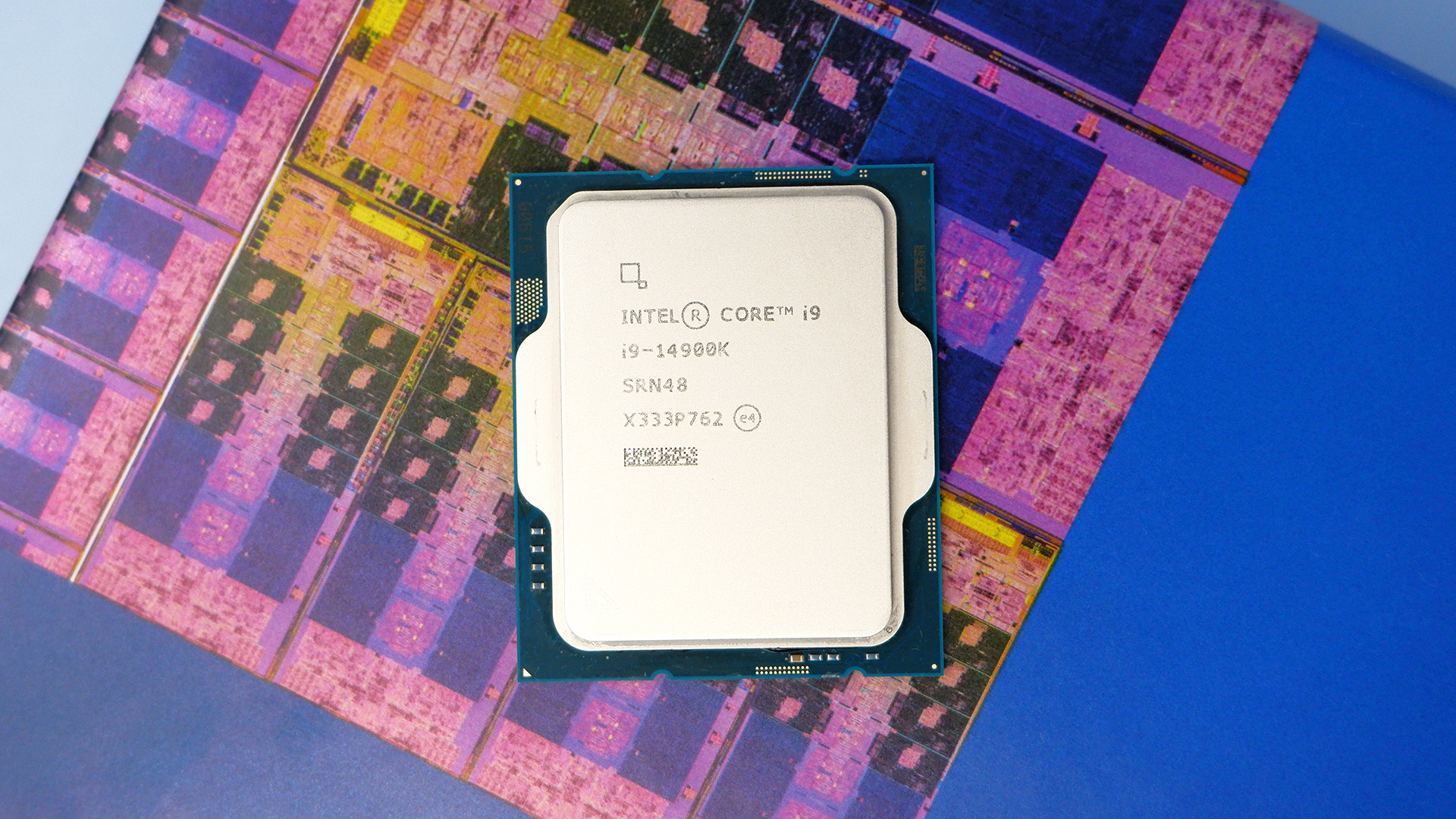Our Verdict
There are no tangible benefits to buying the pricier Core i9 14900K over the often cheaper Core i9 13900K. Prices will eventually come down, the 13900K will sell out, and the 14900K will sit top of the pile. Until then, just stick with whichever Core i9 you can find cheapest.
For
- Great single-threaded and multithreaded performance
- Works wonders with a high-end graphics card
- Compatible with 600/700-series motherboards
Against
- Doesn't improve on the Core i9 13900K by much, if at all
- Large CPU cooler almost essential
- Still can't match AMD 3D V-Cache chips in some games
- Nothing new of note
PC Gamer's got your back
For the fastest chip ever to grace a gaming PC the Intel Core i9 14900K is about as boring a CPU refresh as one could be. We've seen it all before. The massive core count, the architecture, the 6GHz clock speed; the 14900K might do some things better than the 13th Gen but it rarely matters for much. That doesn't make it any less of an awesome gaming chip—it is—it just doesn't push the needle forward much, if at all.
That's why PC builders have a tough decision ahead of them: do you buy a 13th Gen chip and save a couple bucks or invest in a shiny new 14th Gen for the often intangible performance benefit and bragging rights?
The 14900K comes with the same recommended customer pricing as its predecessor, the Core i9 13900K, at launch. That's $589, give or take. The big question for any PC builder is whether the 14900K's distinct brand of bland is worth spending extra money on top versus the Core i9 13900K? At least $30 cheaper today than it was at launch, the 13900K may be the better deal while stocks last.
I've benchmarked both gaming CPUs below, and I've included AMD's finest 3D V-Cache processors, which are still proving tough to beat outright, to weigh up all the high-end options.
Intel Core i9 14900K verdict
✅ You want the best Intel can offer right now: This is the best desktop processor that Chipzilla can muster right now, and that does count for a lot. It's able to meet AMD's 3D V-Cache chips in some key benchmarks and games, and all for a lower price than the red team's best.
❌ You don't really need it: It might sound obvious but this is a very high-end chip with a large price tag. I find it very difficult to recommend either Intel or AMD's top chips to the average PC gamer, as most of the time you can extract near-enough the same performance from a cheaper chip, like a Core i5. Unless your needs are bit more heavy-duty, save your cash for your GPU.
The 14900K struggles to deliver anything new. It's marginally faster than its predecessor, the 13900K, though its minor improvements do not deliver significant improvement in games. You may see marginally bigger numbers in synthetic benchmarks but those benchmarks are the only time you're going to feel that performance boost.
Should we have expected any more of a Raptor Lake refresh? The clue is in the name, after all. This generation is a rehash of an architecture that launched last year, and it performs near-enough the same. I'd love to say the moderate bump to clock speeds make a difference, but it rarely offers tangible benefit. It's certainly not enough to beat AMD's 3D V-Cache chips in those games where Intel falls behind.
Though the important factor is price. The 14900K is no more expensive than the 13900K was at launch, and will make for an almost like-for-like replacement. The tricky bit is that, for the time being, the 13900K remains the cheaper chip as prices have dropped since its release. For the moment, the cheaper 13900K still gets my recommendation.
Intel Core i9 14900K specs
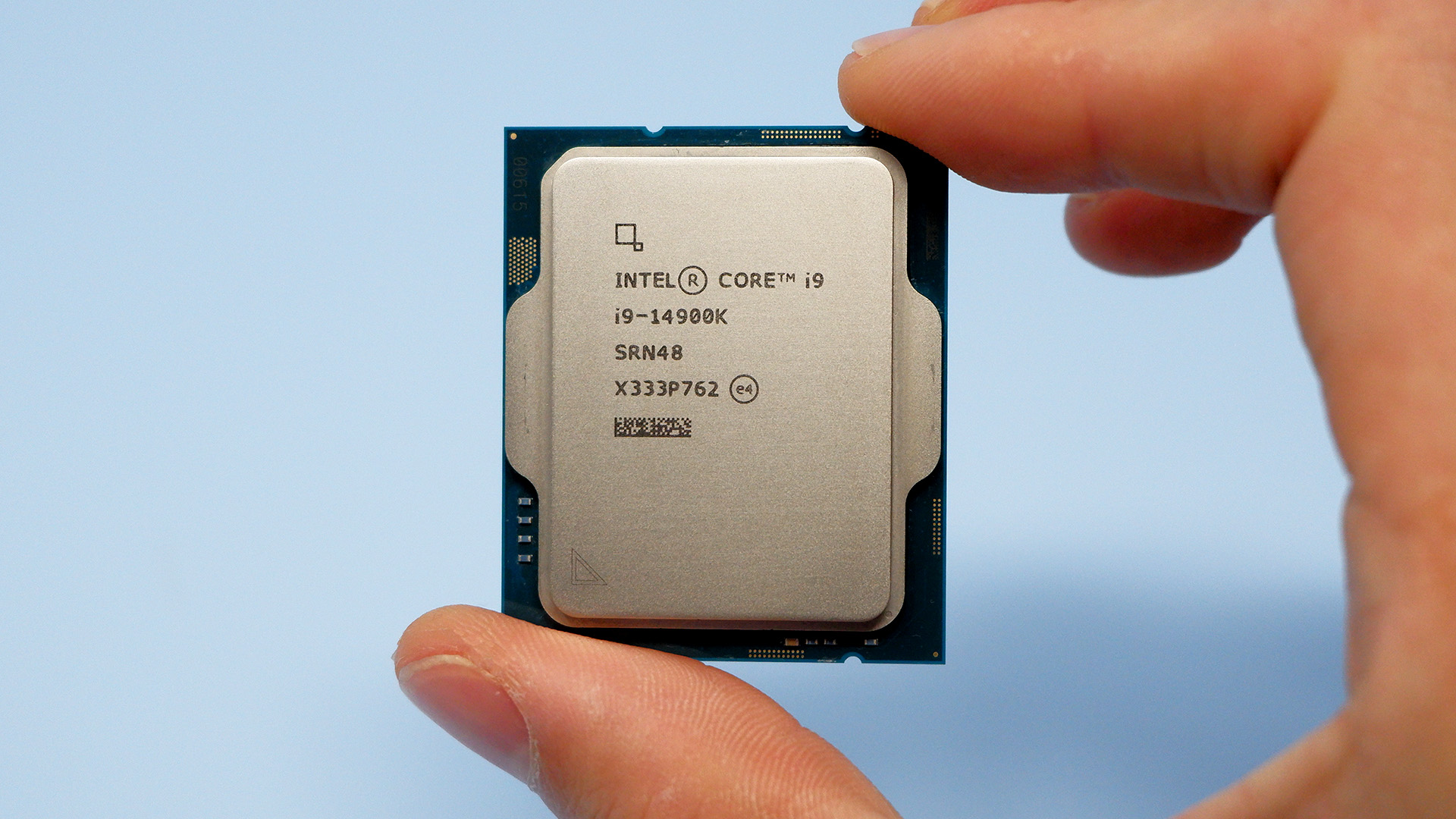
Cores (P+E): 8+16
Threads: 32
L3 Cache (Smart Cache): 36MB
L2 Cache: 32MB
Unlocked: Yes
Max PCIe lanes: 20
Graphics: UHD Graphics 770
Memory support (up to): DDR5 5600MT/s, DDR4 3200MT/s
Processor Base Power (W): 125
Maximum Turbo Power (W): 253
RCP: $589
What's new with the Core i9 14900K? Not all that much. As the flagship processor of a refreshed Raptor Lake generation it is almost a carbon copy of the Core i9 13900KS.
You're looking at a 24-core processor, split between eight Performance-cores (P-cores) and 16 Efficient-cores (E-cores). Each of those P-cores has access to 2MB of L2 cache and each E-core cluster (four E-cores sharing a common cache) has access to 2MB. In total, that's 32MB of L2 cache across the entire chip.
The iGPU present on the 14900K (not found on the 14900KF, or any chip denoted with the KF or just plain F suffix) is the UHD Graphics 770. Unlike the shiny new Arc Xe-LPG iGPU found on Intel's new Meteor Lake mobile processors, this iGPU doesn't pack the punch required of it for 1080p gaming in lieu of a discrete graphics card.
You can use both 600-series and 700-series motherboards with this processor. Naturally, Intel would recommend a Z790 board for the maximum power delivery, alongside a 360mm cooler, though you can get away with less. I've been testing the 14900K with the same Asus ROG Strix Z690-F Gaming Wifi motherboard I've used across the entire LGA 1700 lineup and it's worked great.
Naturally, this means you can stick with a DDR4-compatible motherboard with the 14th Gen. This will surely be the last chip generation to make this offer, however. Intel officially supports up to DDR5-5600 or DDR4-3200, though you can often run much faster kits without issue.

There have been a few improvements by way of faster clock speeds on the 14900K. The P-cores and E-cores are both faster at Max Turbo: an increase of 200MHz on the P-cores and 100MHz on the E-cores. Here's a table to clear things up:
| Header Cell - Column 0 | 14900K | 13900KS |
|---|---|---|
| Max Turbo Frequency (GHz) | 6 | 6 |
| Turbo Boost Max 3.0 (GHz) | 5.8 | 5.8 |
| P-core Max Turbo (GHz) | 5.6 | 5.4 |
| E-core Max Turbo (GHz) | 4.4 | 4.3 |
| P-core Base (GHz) | 3.2 | 3.2 |
| E-core Base (GHz) | 2.4 | 2.4 |
It's actually in power draw where things get a little more interesting for the 14900K. The 14900K has a lower Processor Base Power at 125W compared to the 13900KS at 150W, despite being marginally faster. This, alongside changes to Intel's Extreme Power Delivery Profile for this chip, highlight some power savings that Intel says are made possible by miscellaneous optimisations to the Intel 7 process node (though we weren't told what those were, exactly, but presumably not enough to be calling this an Intel 7+ node).
Let's take a look at the new Extreme Power Delivery Profile for a moment. First introduced with the 13th Gen, namely to allow users to access the full potential of the 13900KS, these profiles are recommendations for three processor power management values: PL1, PL2, and ICCMax.
PL1 and PL2 are limits on how much wattage a processor can draw at any given time.
- PL2 is the maximum power draw a processor can reach under Boost conditions, though is only sustained for a set time period, decided by the Tau value (Turbo Time Parameter). On modern Intel processors, the Tau is set to 56 seconds.
- PL1 is the maximum power draw a chip can sustain after the Tau is reached.
- Confusingly, PL1 and PL2 on modern Intel processors are now set to the same value. This makes PL1 and Tau nominal settings, though they are still listed by Intel.
ICCMax is the maximum current that a processor can draw from a motherboard, and is used to set Boost speeds at any given time. Intel says that by increasing the ICCMax, it's possible to allow the CPU to safely draw a higher current, if a motherboard allows it, to sustain higher multithreaded performance.
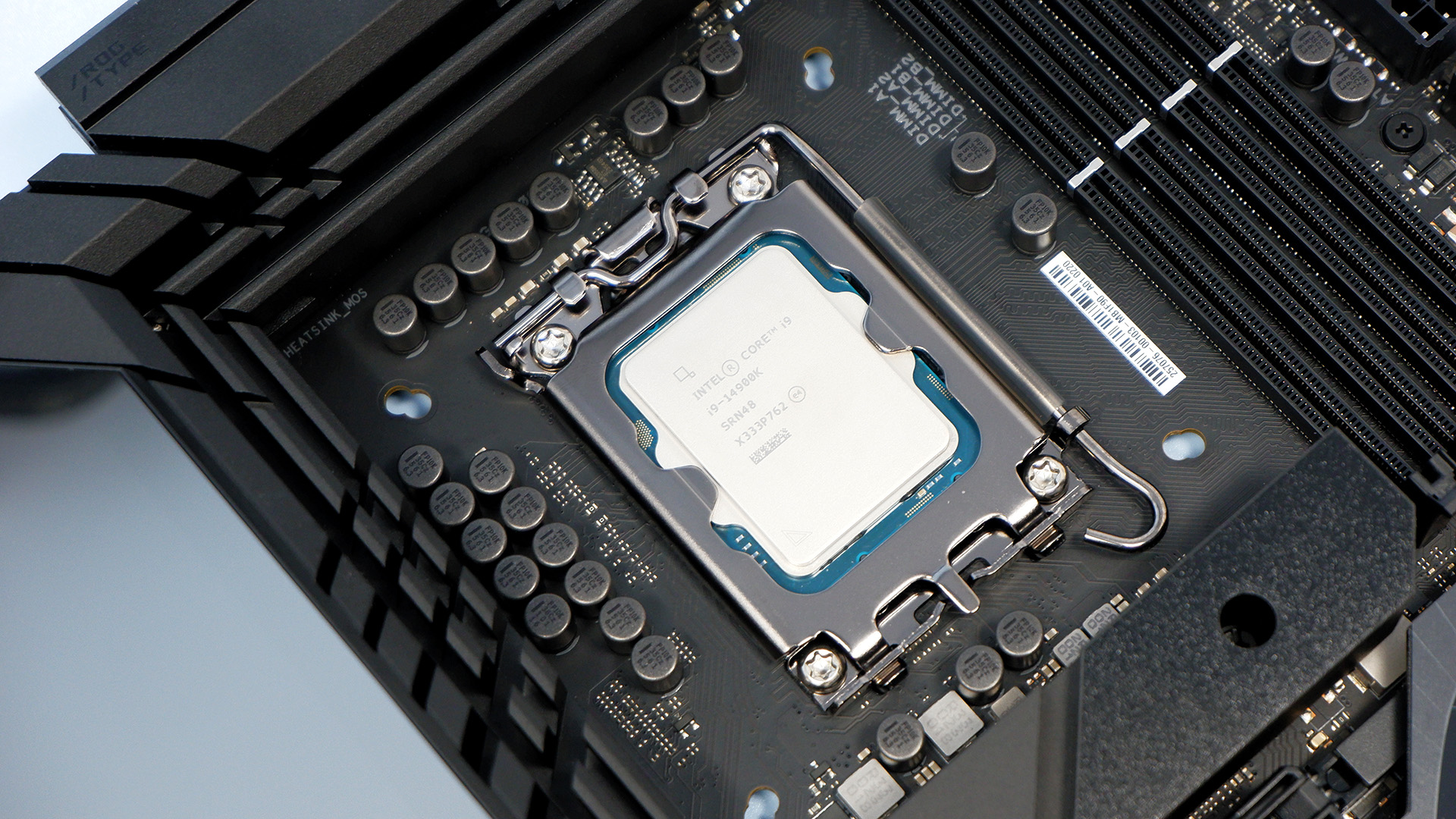
The reason why it only matters for multithreaded performance is that only when using many cores for a demanding multithreaded workload will that sort of power draw be required. Less demanding or single-threaded workloads won't get anywhere close.
What Intel recommends for the Performance (stock) and Extreme Power Delivery Profiles are as follows:
| Header Cell - Column 0 | Performance | Extreme |
|---|---|---|
| PL1 (watts) | 253 | 253 |
| PL2 (watts) | 253 | 253 |
| ICCMax (amps) | 307 | 400 |
It's all quite dense; made worse by the fact that absolutely none of this is paid any attention by motherboard manufacturers. They've been setting power limits to whatever the heck they like for generations; it's only more recently that Intel has made an effort to sanction a higher power draw on its top performing processors.
Take my Z690 motherboard from Asus I'm using for the purposes of this review. It offers Asus Multicore Enhancement, a setting that effectively overclocks your CPU and that entirely ignores Intel's recommended power limits. With this enabled, the board is given carte blanche to play with ICCMax and PL2 with next to no restraints.
Asus doesn't even follow Intel's advice when set to what you might consider stock values. Even then, the ICCMax is set to 360A.
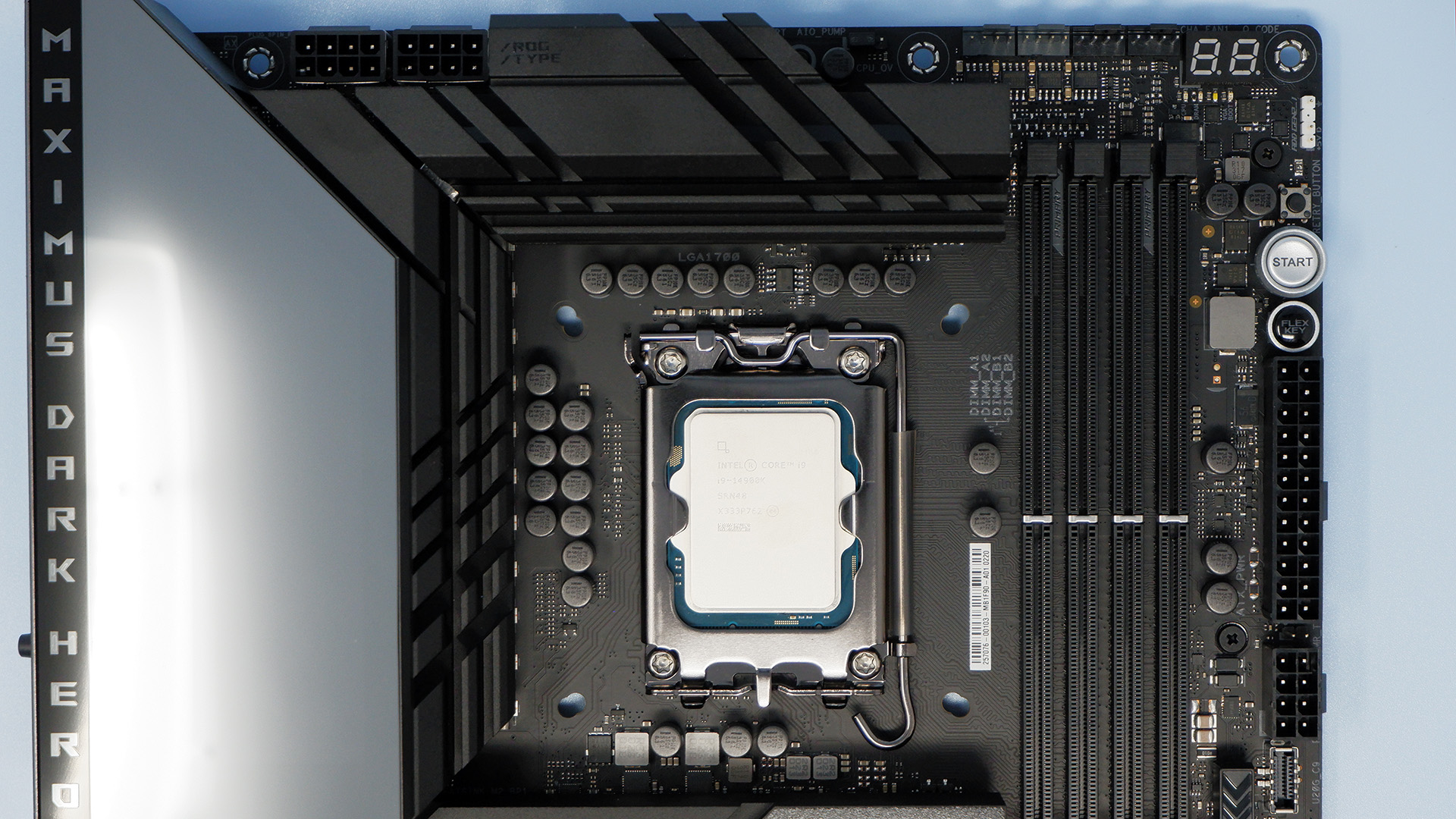
My point is, it's good to know what's going on with your processor under the hood, and what values Intel recommends as within spec for your CPU. However, in reality, all of these values may have very little bearing on how a chip actually runs once installed in your motherboard.
Settings like ICCMax are a sure-fire way to increase the power consumption of your chip, but do they really benefit performance all that much? In my opinion, no, not really. You see marginal gains in multithreaded performance that mostly makes for higher scores in synthetic benchmarks, but actual gaming performance appears often no better. In return, you gobble up so much power it's akin to running two high-end graphics cards in SLI. But you be the judge; I've tested with both Multicore Enhancement enabled and disabled in the charts down below.
Thread Director, the recommendation engine behind the scenes trying to nudge Windows into using the best core for the job, also remains the same on the 14th Gen as it was the previous generation. All of which should largely be expected of what is a generational refresh, not a generational shift.
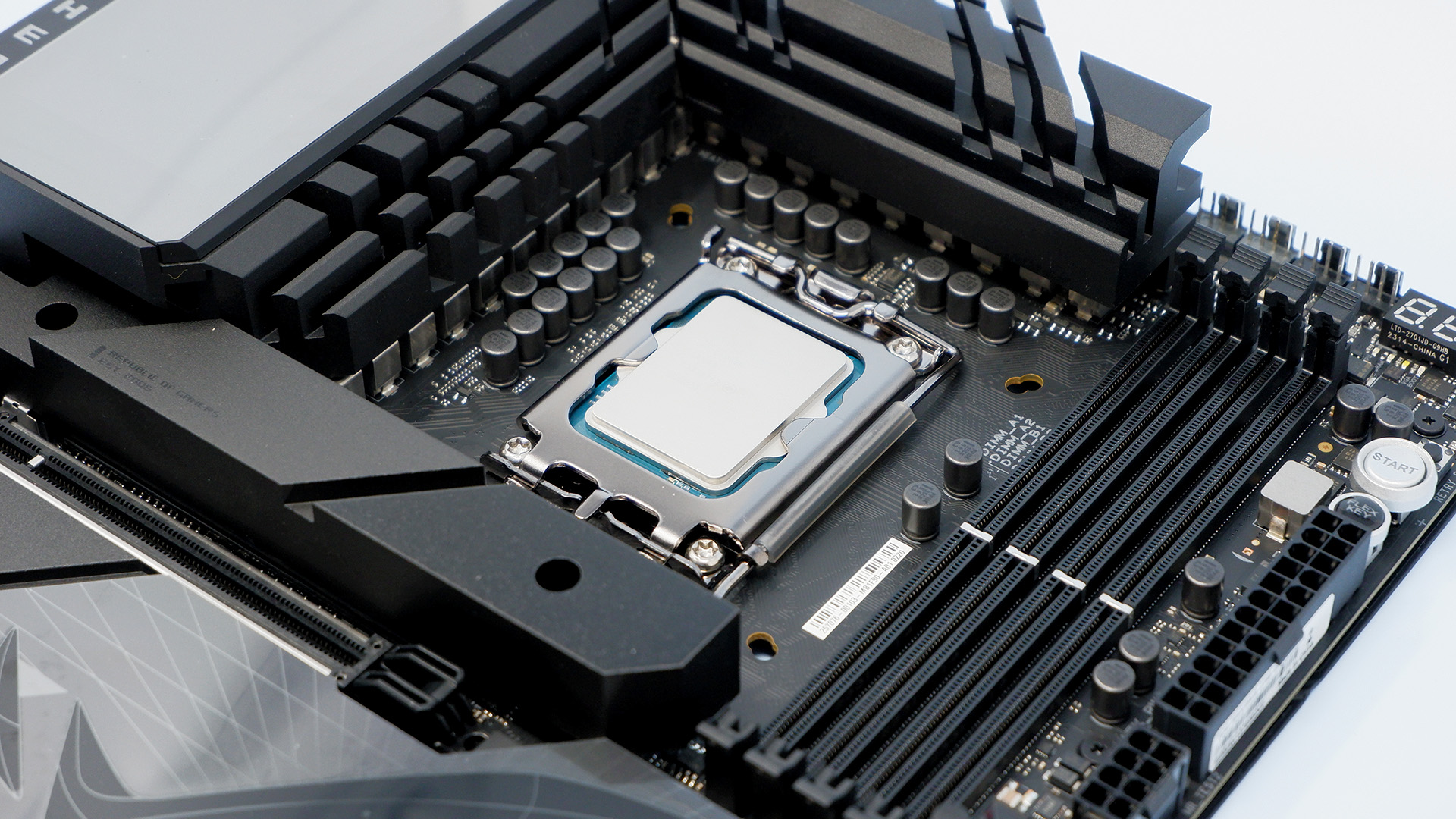
Intel has thrown a couple features at the 14900K on the software side to see if it can't push performance a little further. This includes AI-guided overclocking via Intel's Extreme Tuning Utility, or XTU. This is a feature exclusively on the 14900K right now, though Intel says it will come to chips further down the stack, and it recommends using this as either your one-stop shop for a stable overclock or for getting a baseline on which to build a better OC.
The other potentially exciting thing is Application Optimization, a new feature that will work with select 14th Gen processors—including this one—to boost performance via scheduling enhancements. Ahead of these chips' release, this feature requires early access BIOS and driver files I'm yet to receive, so I can't speak to how handy it actually is in practice.
Application Optimization is extremely limited by its game support today, regardless. It only works with two games: Metro Exodus and Rainbow Six: Siege. Intel says it's working with further developers to add to the list.
Intel Core i9 14900K benchmarks
The 14900K is often the fastest gaming CPU in benchmarking. It tops the charts in Metro: Exodus, Far Cry 6, and Shadow of the Tomb Raider, and that's without going beyond what my motherboard considers stock power limits.
The kicker is that it's only marginally faster than the Core i9 13900K, and often no quicker at all. In F1 2021 and Far Cry 6, the 14900K made the biggest gains, but there are just as many titles in which these two chips are neck-a-neck. Not a convincing leap in gaming performance, unfortunately.
The word of the moment is 'frame consistency'. Something of a catch-all term for minimum and 1% low frame rate performance, it's important to put on a good show in these metrics to ensure a smooth gaming experience.
On that front, the 14900K delivers smooth gameplay throughout my testing. You could make a similar case for AMD's 3D V-Cache gaming CPUs, however, as there are games that favour either Intel or AMD's top chips in this metric. There are a few titles where AMD still has Intel beat in terms of gaming performance, too, though there's usually little between these rival processors. A couple of exceptions: In F1 2021, AMD's X3D chips pull a surprising lead; in Far Cry 6, Intel comes out on top.
Intel
Motherboard: Asus ROG Strix Z690-F Gaming WiFi
Storage: 2TB Sabrent Rocket 4.0 Plus
Cooler: Asus ROG Ryujin II
PSU: Gigabyte Aorus P1200W
AMD
Motherboard: ASRock X670E Taichi
Storage: 1TB WD Black SN850
Cooler: Corsair H100i RGB
PSU: NZXT 850W
Shared
Memory: G.Skill Trident Z5 Neo DDR5-6000 CL30 2x 16GB
Graphics card: Nvidia GeForce RTX 3080 10GB
The 14900K shows its best performance in non-gaming benchmarks. It's mostly in the more traditional benchmarks that you see the benefit of mildly increased clock speeds. It's the fastest gaming CPU we've ever run through the X264 encoding benchmark, and it nearly knocks AMD's Ryzen 9 7950X3D off the top spot in Blender.
It's performance in these sorts of intense workloads that you need to care about to justify buying the 14900K. Otherwise, just grab a 14600K—it's seriously almost as good for gaming and still a great runabout for multitasking and editing.
The 14900K is pretty dominant in Cinebench R23, and when you start throwing unlimited powah at this chip it'll give you a little more in multithreaded tests. It's not all that convincing, however, as a good run on a juiced up 13900K had it beat once.
You'll notice that the 14900K with Multicore Enhancement enabled is not performing any better for its higher power draw in most benchmarks, and that's indicative of the actual benefit to a PC gamer. It really won't make any difference unless the chip would usually be limited by some sort of power wall, which it often isn't in gaming or single-threaded workloads.
Also you'll need a seriously capable cooler, at least a 360mm AIO, if not a properly hard-tubed loop, to actually run this juiced up chip to its full potential without hitting some thermal throttling limit. That said, it was synthetic, highly demanding benchmarks that really push this chip into thermal throttling limits.
Pumping loads of power through this chip is about as actually worthwhile as pumping it full of toothpaste—I'm beginning to think those stock limits were the limits for good reason. You'll maybe score yourself a frame that's in no way worth it for significantly higher power draw. It also draws far more power under load with Multicore Enhancement enabled than a 13900K, rarely for much performance gain at all.
More generally what you're seeing here is the two different approaches of Intel and AMD to their desktop CPU architectures and how they play differently between gaming and more general creative or encoding benchmarks. Intel has a ton of cores to throw at an application if it needs them, though not all of them are as quick as the myriad full-fat Zen 4 cores in AMD's top chip. For those applications where L3 cache is important, which does include many games, AMD's Ryzen 9 also gets a kick out of its 3D V-Cache that Intel can't always match, though Intel's P-cores remain plenty good for gaming.
It remains a real close match between these two companies' top chips.
Intel Core i9 14900K analysis

I find I have a lack of things to say about the Core i9 14900K. There have been much more exciting releases in recent years, and I dare say this generation will be easily forgotten. Remember Kaby Lake? I doubt it, but that generation came with a new video decoding/encoding block and moderate clock improvements, and I'd still say it brought more to the table than the 14th Gen.
But this is not a bad chip, per se, just a pretty generic refresh. It's a near-carbon copy of a great chip with marginally quicker clock speeds and it performs about as you'd expect for such minimal adjustments.
If you consider that the competition asks roughly $100 more for its competing chip, maybe it's a bit mean to call the 14900K boring. From an entirely empirical point of view, its performance is actually superb; a sure-fire way to keep an RTX 4090 or RTX 4080 fed for smooth frame rates. But, sorry, it is boring.
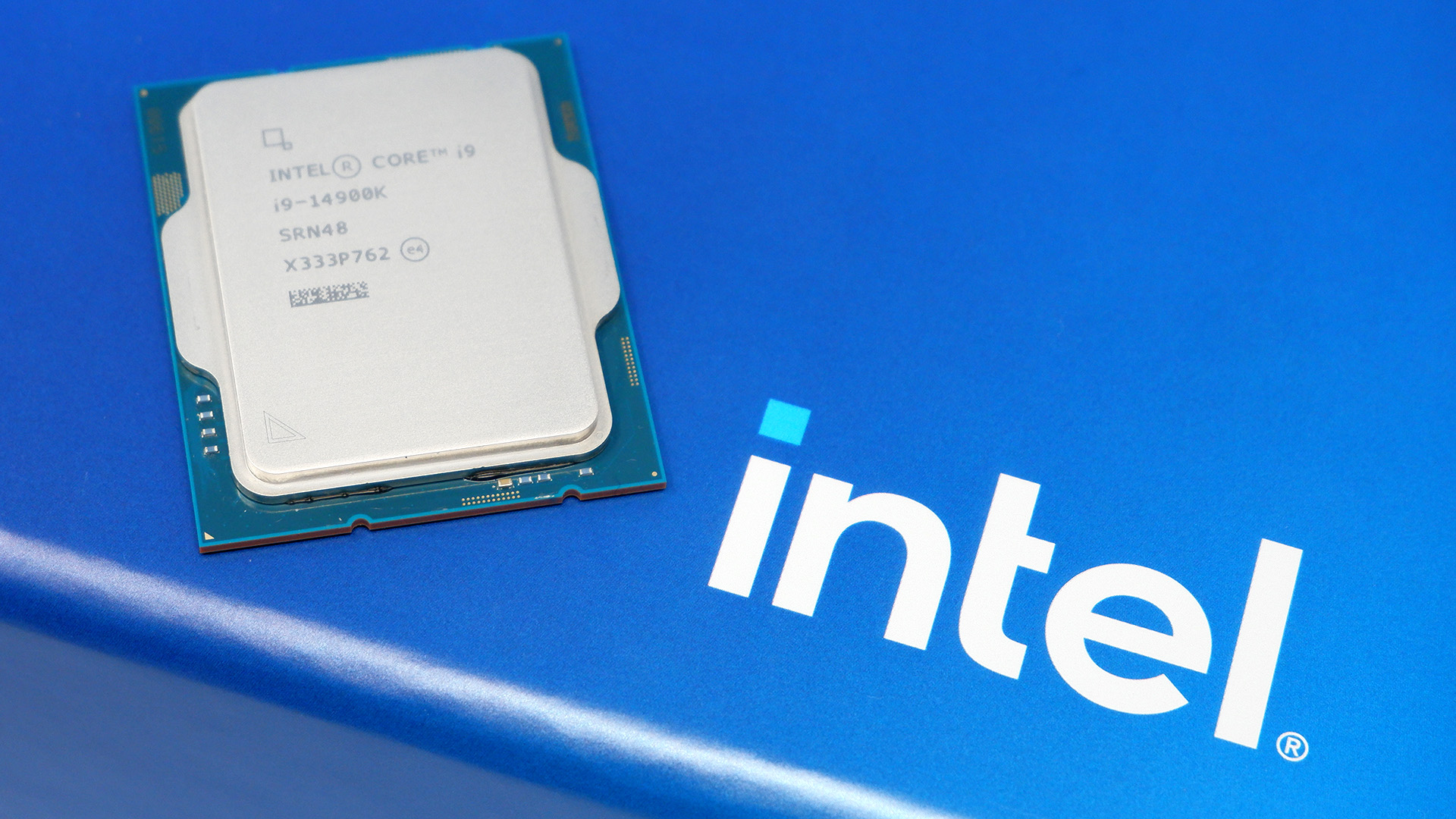
We've been spoiled with a couple of great chip generations back-to-back, and this sort of refresh just doesn't really inspire me to wax lyrical about how wonderfully adept it is at this, that, or the other. Besides a couple of neat tricks, it feels like we've seen this chip before—it's the Core i9 13900K dressed up in a monocle and top hat.
The 14900K doesn't move the needle enough to challenge AMD in those games where it recently took a lead courtesy of 3D V-Cache, though I don't feel Intel could've ever claimed that with merely a refresh alone. It'll take more than a couple hundred megahertz to compete with heaps of cache. Cache is king, after all. If you were considering buying an AMD 3D V-Cache chip before reading this review—perhaps because its strengths suit your needs best—I don't see this particular Intel chip changing your mind.
If you are committed to an Intel processor you should also weigh up whether the 14900K is worth buying over the 13900K. You will be paying more for the 14900K for a while, at least. You can find the 13900K for $550 and I don't see you getting a materially worse chip for saving your cash.
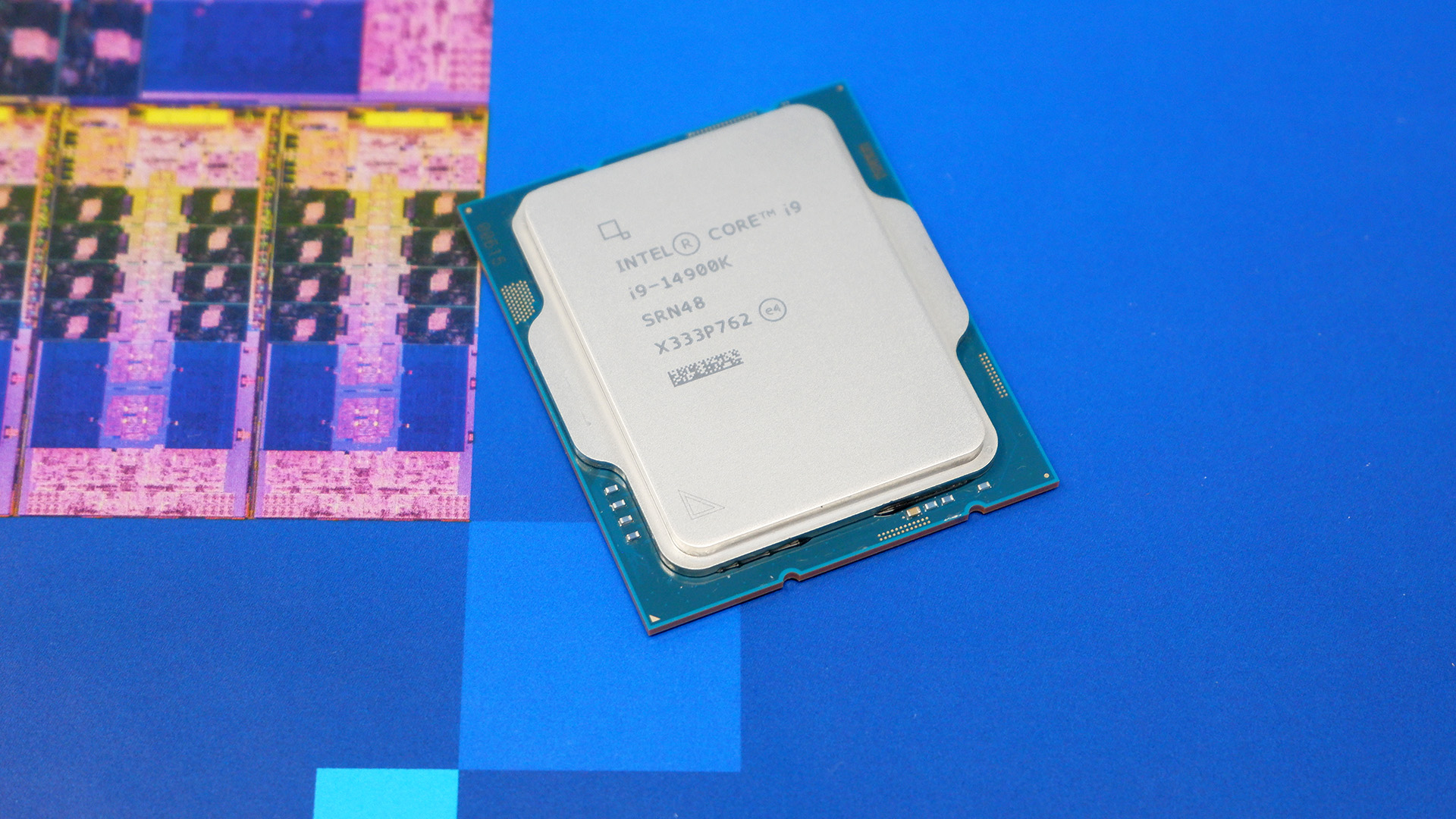
If you already have a Core i9 or Core i7 from any of LGA 1700 generation there's no good reason to upgrade to this chip, either. But before it sounds like I'm piling in on this poor refresh, I'll note it is very convenient offering three CPU generations all on the same socket. Though the circumstances for wanting to upgrade from a fairly recent 12th Gen to a 14th Gen chip are pretty unlikely, it might be worth doing for some, especially if you're going from, say, an Alder Lake i5 and want something more potent. I won't knock the opportunity that the LGA 1700 socket offers for a simple swap-in upgrade.
The Core i9 14900K, then—boring, but not bad. A gaming CPU built on the shoulders of other really great gaming CPUs—what matters most is that you can hit high frame rates, encode video, build a house in Blender, and stream to your adoring fans all at once. With this high-end CPU, you can. Though that's as true of the previous top Raptor Lake chip as it is this one.
There are no tangible benefits to buying the pricier Core i9 14900K over the often cheaper Core i9 13900K. Prices will eventually come down, the 13900K will sell out, and the 14900K will sit top of the pile. Until then, just stick with whichever Core i9 you can find cheapest.

Jacob earned his first byline writing for his own tech blog. From there, he graduated to professionally breaking things as hardware writer at PCGamesN, and would go on to run the team as hardware editor. He joined PC Gamer's top staff as senior hardware editor before becoming managing editor of the hardware team, and you'll now find him reporting on the latest developments in the technology and gaming industries and testing the newest PC components.
